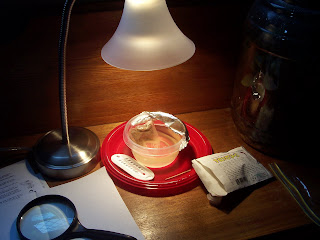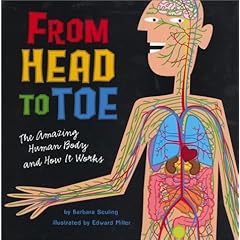These are the sprout seeds, the bigs ones are radish seeds, and the smaller ones are alfalfa.


This is us setting up the jars, first we just some pantyhose to make the top of the jar, then we added water and the seeds and put them in the cabinet to dry.




The seeds after they finished growing. We rinsed and dehulled them. Then we dried them and put them in bags to be eaten.
Make a sprouter jar. (Source)
- Cut a piece of pantyhose or cheesecloth to fit over the top of a quart jar. It needs to be big enough to drape over the edge at least an inch or so.
- Keep it in place by stretching a rubber band around the outer edge of the jar. If it is a canning jar, you can also use the rim from a canning lid.




The seeds after they finished growing. We rinsed and dehulled them. Then we dried them and put them in bags to be eaten.
Sprout alfalfa or radish seeds (Source: SproutPeople.com)
1. Put 1 tablespoon of alfalfa sees or 3 tables of radish seeds in your sprouter jar. Cover by stretching your fabric over the top and fastening as described above.
2. Put jars someplace out of direct light where they won't be disturbed. Allow seeds to soak for 6-12 hours.
3. Drain off the soak water.
4. Rinse thoroughly with cool water. Drain thoroughly.
5. Set your sprouter anywhere out of direct sunlight and at room temperature between rinses. This is where your sprouts do their growing.
6. Rinse and drain again every 8-12 hours for 3 days.
7. Greening: On the 4th day relocate your sprouts to a brighter location. Avoid direct sun - it can cook your sprouts. Indirect sunlight is best but virtually any light will do. Experiment - you will be amazed at how little light sprouts require to green up.
8. Continue to rinse and drain every 8-12 hours.
9. Finishing: Your sprouts will be done during day 5 or 6. The majority of sprouts will have open leaves which will be green if you exposed them to light.
10. De-Hull: Before your final rinse remove the seed hulls. Transfer the sprouts to a big (at least 3-4 times the volume of your sprouter) pot or bowl, fill with cool water, loosen the sprout mass and agitate with your hand. Skim the hulls off the surface. Return the sprouts to your sprouter for their Rinse and Drain.
11. Harvest: Your sprouts are done 8-12 hours after your final rinse. After the de-hulling and the final rinse we need to drain very thoroughly and let our sprouts dry a bit. That will help them keep longer in the refrigerator. Let sit for 8-12 hours OR use a salad spinner.
12. Refrigerate: Transfer the sprout crop to a plastic bag or the sealed container of your choice.
1. Put 1 tablespoon of alfalfa sees or 3 tables of radish seeds in your sprouter jar. Cover by stretching your fabric over the top and fastening as described above.
2. Put jars someplace out of direct light where they won't be disturbed. Allow seeds to soak for 6-12 hours.
3. Drain off the soak water.
4. Rinse thoroughly with cool water. Drain thoroughly.
5. Set your sprouter anywhere out of direct sunlight and at room temperature between rinses. This is where your sprouts do their growing.
6. Rinse and drain again every 8-12 hours for 3 days.
7. Greening: On the 4th day relocate your sprouts to a brighter location. Avoid direct sun - it can cook your sprouts. Indirect sunlight is best but virtually any light will do. Experiment - you will be amazed at how little light sprouts require to green up.
8. Continue to rinse and drain every 8-12 hours.
9. Finishing: Your sprouts will be done during day 5 or 6. The majority of sprouts will have open leaves which will be green if you exposed them to light.
10. De-Hull: Before your final rinse remove the seed hulls. Transfer the sprouts to a big (at least 3-4 times the volume of your sprouter) pot or bowl, fill with cool water, loosen the sprout mass and agitate with your hand. Skim the hulls off the surface. Return the sprouts to your sprouter for their Rinse and Drain.
11. Harvest: Your sprouts are done 8-12 hours after your final rinse. After the de-hulling and the final rinse we need to drain very thoroughly and let our sprouts dry a bit. That will help them keep longer in the refrigerator. Let sit for 8-12 hours OR use a salad spinner.
12. Refrigerate: Transfer the sprout crop to a plastic bag or the sealed container of your choice.



































 You may have noticed the lovely illustration of
You may have noticed the lovely illustration of 





















